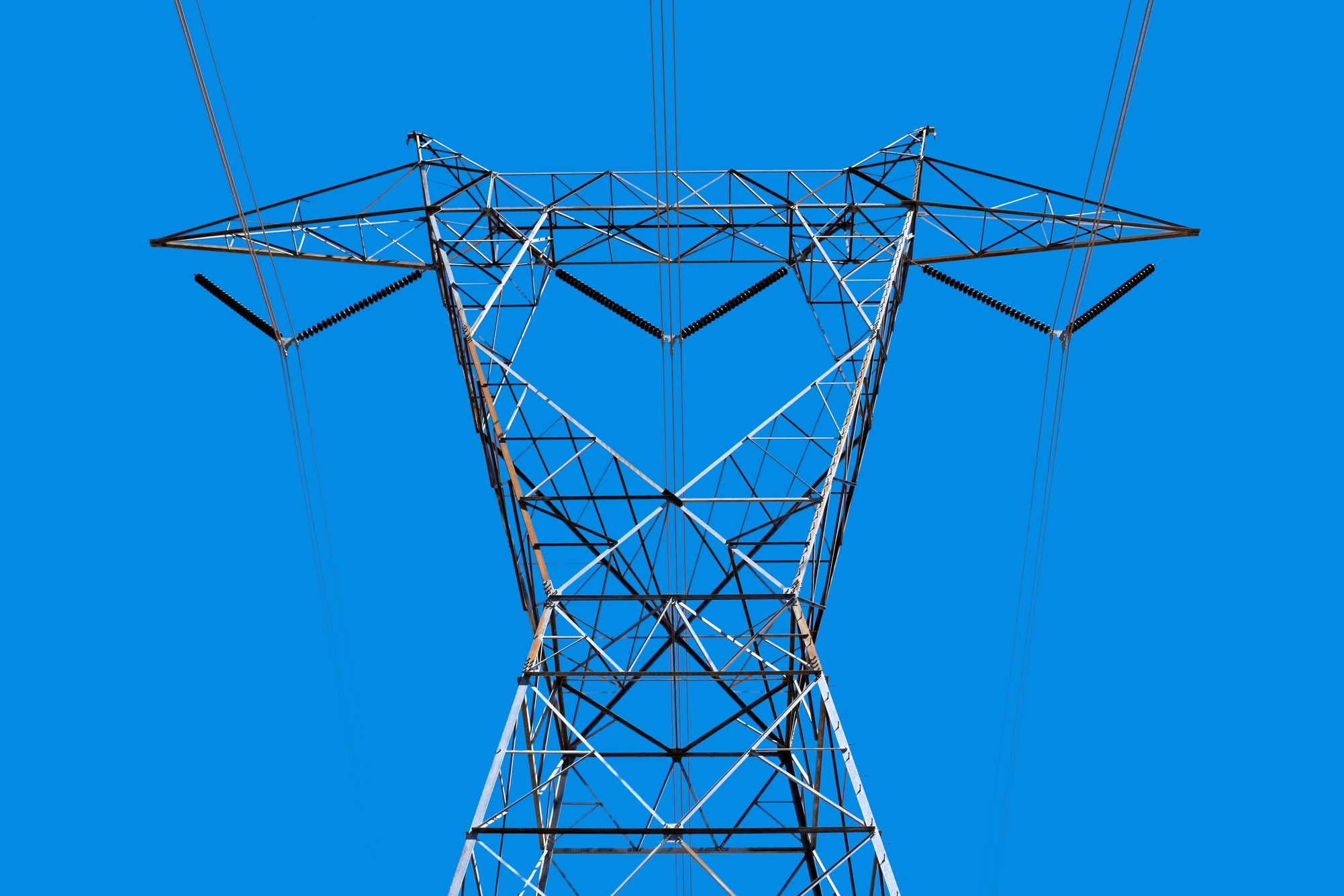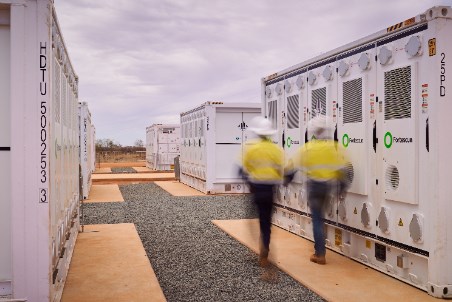Fuel Cells Could Help Meet the Power Demand from Data Centers – Goldman Sachs

Report on Powering Digital Infrastructure with Sustainable Behind-the-Meter Solutions
Executive Summary
The rapid expansion of artificial intelligence (AI) is creating an unprecedented demand for electricity from data centers, straining existing utility grids. This report analyzes the role of behind-the-meter (BTM) power generation systems, with a specific focus on fuel cells, as a critical solution to this challenge. These technologies offer a pathway to power the digital revolution in alignment with key United Nations Sustainable Development Goals (SDGs), particularly SDG 7 (Affordable and Clean Energy), SDG 9 (Industry, Innovation, and Infrastructure), and SDG 11 (Sustainable Cities and Communities).
The Growing Energy Challenge and the Rise of BTM Systems
AI-Driven Power Demand Exceeding Grid Capacity
The surge in AI workloads has caused power demand from data centers to exceed the typical handling capacities of traditional utility grids. This creates a significant challenge for ensuring the uninterrupted operation of critical digital infrastructure. Incremental electricity demand from data centers is projected to reach an estimated 730 Terawatt-hours between 2024 and 2030.
Behind-the-Meter (BTM) Systems as a Resilient Solution
BTM solutions, which involve on-site energy generation and storage, provide a direct and reliable power source insulated from grid vulnerabilities. By decentralizing power generation, BTM systems enhance energy security and support the development of resilient infrastructure, a core tenet of SDG 9. It is estimated that BTM systems will meet one-quarter to one-third of the incremental demand, requiring the deployment of up to 25 gigawatts (GW) of BTM generation over the next five years. Viable BTM technologies include:
- Gas turbines
- Fuel cells
- Diesel engines
- Solar and small modular reactors (SMR)
- Geothermal plants
- Battery energy storage systems
Fuel Cells: A Premier Technology for Sustainable Data Centers
Comparative Advantages Over Traditional Gas Turbines
Fuel cells, which generate electricity through an electrochemical reaction rather than combustion, are exceptionally well-suited for data center applications. Their operational characteristics offer significant advantages over conventional gas turbines, directly contributing to multiple SDGs.
- Rapid Deployment for Resilient Infrastructure (SDG 9): Fuel cell systems are modular and can be deployed in under a year, compared to lead times of over five years for gas turbines. This speed is critical for scaling infrastructure to meet immediate demand.
- Enhanced Efficiency for Clean Energy and Climate Action (SDG 7 & SDG 13): Fuel cells are 10-30% more efficient, requiring less fuel per unit of electricity. This reduces resource consumption and lowers CO2 intensity, supporting climate action goals.
- Urban Compatibility for Sustainable Cities (SDG 11): Operating with minimal noise and producing no NOx or CO emissions, fuel cells are ideal for urban data centers. This improves local air quality and reduces noise pollution, contributing to healthier and more sustainable communities.
- Operational Versatility: Fuel cells maintain high efficiency across various operating levels, providing the steady baseload power required by data centers more effectively than gas turbines.
Market Projections and Contribution to SDGs
Projected Adoption of Fuel Cell Technology
The unique advantages of fuel cells position them to capture a significant share of the BTM market for data centers. Projections indicate that fuel cells could provide 6-15% of the incremental power demand from data centers by 2030. This translates to a required capacity of approximately 8-20 GW, representing a substantial investment in cleaner and more efficient energy technology in line with SDG 7.
Challenges and the Path Forward
Scaling Manufacturing to Meet Sustainable Demand
The primary constraint to the widespread deployment of fuel cells is the currently limited manufacturing capacity, a result of their historically niche applications. However, significant manufacturing expansion is anticipated in the US and Asia. Overcoming this hurdle is essential to scaling this innovative technology, thereby accelerating progress towards building the sustainable and resilient digital infrastructure required for the future, as envisioned in SDG 9.
1. Which SDGs are addressed or connected to the issues highlighted in the article?
SDG 7: Affordable and Clean Energy
- The article focuses on alternative energy generation systems, specifically fuel cells, to meet the rising power demand from data centers. This directly relates to ensuring access to reliable and modern energy. The discussion on efficiency and cleaner fuel sources (hydrogen potential) aligns with the goal’s clean energy aspect.
SDG 9: Industry, Innovation, and Infrastructure
- The article discusses the need for new energy infrastructure (Behind-the-Meter systems) to support the expansion of digital infrastructure (data centers driven by AI). It highlights innovative technologies like fuel cells as a solution to make this infrastructure more resilient, efficient, and sustainable.
SDG 11: Sustainable Cities and Communities
- The article mentions that data centers are often located in urban settings. It points out that fuel cells produce no NOx and CO, which are “especially harmful in an urban setting.” This directly connects to reducing the adverse environmental impact of cities by improving air quality.
SDG 13: Climate Action
- The article explicitly states that the “CO2 intensity of fuel cells is lower than that of gas turbines.” By promoting a switch to a more energy-efficient and lower-carbon technology to power a growing industry, the article addresses measures to combat climate change and its impacts.
2. What specific targets under those SDGs can be identified based on the article’s content?
SDG 7: Affordable and Clean Energy
- Target 7.2: By 2030, increase substantially the share of renewable energy in the global energy mix. The article mentions that fuel cells could use hydrogen, which can be produced from renewable sources, contributing to this target.
- Target 7.3: By 2030, double the global rate of improvement in energy efficiency. The article directly supports this by stating that fuel cells are “10-30% more efficient than gas turbines.”
SDG 9: Industry, Innovation, and Infrastructure
- Target 9.1: Develop quality, reliable, sustainable and resilient infrastructure. The article describes Behind-the-Meter (BTM) systems as a way to ensure “uninterrupted operation, insulated from the vulnerabilities of the grid,” which directly addresses the need for reliable and resilient infrastructure for the growing data center industry.
- Target 9.4: By 2030, upgrade infrastructure and retrofit industries to make them sustainable, with increased resource-use efficiency and greater adoption of clean and environmentally sound technologies. The shift from traditional gas turbines to more efficient and lower-emission fuel cells for powering data centers is a clear example of this target in action.
SDG 11: Sustainable Cities and Communities
- Target 11.6: By 2030, reduce the adverse per capita environmental impact of cities, including by paying special attention to air quality. The article’s point that fuel cells produce “no NOx and CO which is especially harmful in an urban setting” directly relates to achieving this target by reducing air pollution from energy generation within cities.
SDG 13: Climate Action
- Target 13.2: Integrate climate change measures into national policies, strategies and planning. While the article discusses corporate strategy rather than national policy, the adoption of lower-emission technology (fuel cells with lower CO2 intensity) to meet new energy demands represents an integration of climate change mitigation measures into industrial planning.
3. Are there any indicators mentioned or implied in the article that can be used to measure progress towards the identified targets?
Indicators for SDG 7 & 9 (Energy Efficiency and Clean Technology Adoption)
- Energy Efficiency Improvement: The article provides a direct metric: fuel cells are “10-30% more efficient than gas turbines.” This percentage can be used as an indicator of progress in energy efficiency.
- Capacity of New Generation Systems: The article estimates that “up to 25 gigawatt (GW) of BTM generation will be deployed over the next five years.” This provides a quantifiable measure of new infrastructure deployment.
- Fuel Cell Capacity Growth: A specific indicator for the adoption of this cleaner technology is the projection of “8-20GW of fuel cell capacity required to supply electricity by 2030.”
- Share of BTM Power Generation: The estimate that “25-50% of total behind-the-meter power generation supply, could ultimately be provided through fuel cells” serves as an indicator for the market penetration of this technology.
Indicators for SDG 11 & 13 (Environmental Impact and Emissions Reduction)
- Reduction in Air Pollutants: The article implies a qualitative but critical indicator: the elimination of specific emissions. It states that fuel cells produce “no NOx and CO” compared to combustion-based alternatives.
- Carbon Dioxide (CO2) Intensity: The statement that the “CO2 intensity of fuel cells is lower than that of gas turbines” is a direct indicator for measuring progress on climate action. Progress could be measured by the aggregate reduction in CO2 intensity as fuel cells replace gas turbines.
4. Create a table with three columns titled ‘SDGs, Targets and Indicators” to present the findings from analyzing the article. In this table, list the Sustainable Development Goals (SDGs), their corresponding targets, and the specific indicators identified in the article.
| SDGs | Targets | Indicators |
|---|---|---|
| SDG 7: Affordable and Clean Energy |
|
|
| SDG 9: Industry, Innovation, and Infrastructure |
|
|
| SDG 11: Sustainable Cities and Communities |
|
|
| SDG 13: Climate Action |
|
|
Source: goldmansachs.com
What is Your Reaction?
 Like
0
Like
0
 Dislike
0
Dislike
0
 Love
0
Love
0
 Funny
0
Funny
0
 Angry
0
Angry
0
 Sad
0
Sad
0
 Wow
0
Wow
0




















































.jpg.webp?itok=0ZsAnae9#)
























